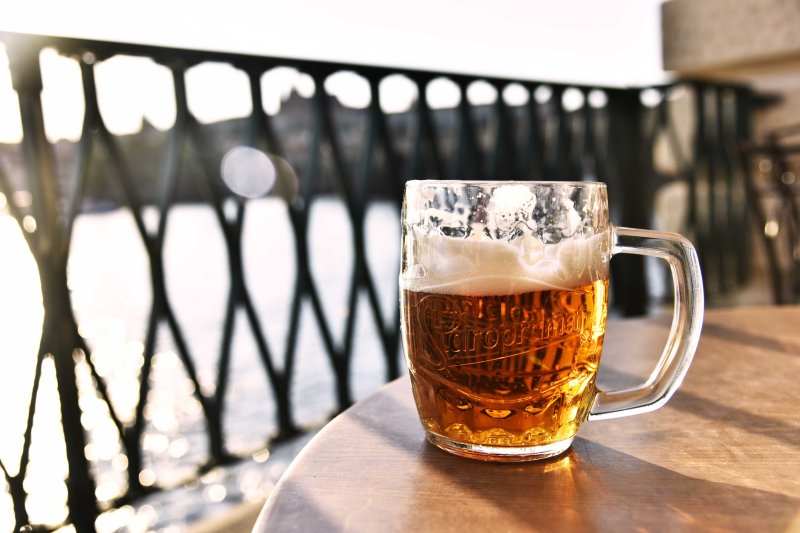Filter Search
Show available only
Categories
Price
Select all
Clear all
$0 - $10
$10 - $50
$50 - $100
$100 - $500
$500 & above
Filter Search
Show available only
Categories
Price
Select all
Clear all
$0 - $10
$10 - $50
$50 - $100
$100 - $500
$500 & above
Product is not availabe in this category, please select other category
ALL ABOUT WHEAT BEER
Brewers craft wheat beers with high levels of wheat alongside malted barley, which creates some distinct characteristics not present in many beers. The resulting mixture appears a bit cloudy and hazy since the proteins from the wheat hang in the mixture. Wheat creates bready, light, citrus flavors present in nearly all the different styles brewers craft. It also creates a creamy texture that many brewers enhance by adding oats, which gives them a more rich texture. If you’re looking for a light, refreshing drink to perk up your day or wind down your evening, take a look at LiquorSplit’s selection and grab one that suits your tastes.

History
Wheat beer originated in the Free State of Bavaria the southeast part of Germany. Originally called weissbier, German for “white beer”, wheat beers acquired their name from the pale yellow-white coloration that wheat and barley produce when used together. Outside of Bavaria, weissbier gets referred to as hefeweizen, meaning “yeast wheat” in German. Over 6,000 years ago, the Sumarians in Mesopotamia created the first wheat-like beers. The grains they used were genetic parents of modern-day wheat. The oldest picture depicting beer drinking that archaeologists found shows people drinking these beers in 3400 BC. Early Egyptians used similar methods to craft their own wheat beers as well. Early Bavarian history shows that the Bavarian rulers gave the Degenberg family the right to brew wheat beers in 1520. However, the dukes resented the decision as the family earned quite a bit of money from their endeavors. Many people began to brew their own batches, and the dukes tried to outlaw brewing. However, the rule excluded the Degenbergs since they were originally granted royal permissions. Unfortunately, the Degenberg patriarch died and the duke, Maximilian I, claimed the rights for himself and turned it into a monopoly. Now, every inn bought their beers exclusively from breweries owned by Bavarian dukes. The monopoly lasted for nearly 200 years until the royalty gave certain monasteries and brewers permission to brew weissbier too since its popularity declined dramatically. Bavarian lagers became the popular drink and weissbier got pushed to the side until the 1950s. George Shneider and his family continued to brew weissbier despite its unpopularity, which turned out to be a great decision. As the 1960s rolled around, wheat beers suddenly saw a resurgence, and sales took off! Suddenly, everyone wanted them and the trend remains true today. Weissbier holds the title as the most popular style of beer in Bavaria, ten percent of the overall market in Germany, and continues to grow in popularity worldwide.
How Wheat Beer is Made
Wheat beers cause significant challenges for brewers since the proteins and starches in wheat like to bind, making sugar extraction harder. First, brewers steep their grains in hot water to create a mash that they boil for twenty minutes. Next, they sparge (moisten the mash with water) the grains and discard them. They add in malt extracts to create an unfermented mixture called wort and bring the mixture back to a boil. As they boil the wort, brewers add bittering hops that they’ll let sit for an hour. Towards the end of the boil, they may add in flavors or more hops depending on the recipe. They cool the wort down and oxygenate it before pitching in yeast to let it ferment at 68° to 72° F. The wort sits on top of the beer for three to five days before removing the wort, straining the mixture, and letting the beer age for another two to three weeks in a cool environment. Once it’s ready, brewers carbonate the beer and bottle or keg it for distribution.
Types of
- American Wheat Beer - American wheat beers take the typical German recipe and use a tamer yeast. This removes any clove and banana flavors present and makes the beers crisp with a sweet and dry finish. Further deviating from the original recipe, brewers often add hops and flavor that ranges anywhere from mild to intensely hoppy like an IPA. While most American wheat beers don’t present quite that intensely, the option remains for those of us who love the complex bitterness that hops bring.
- Belgian Witbier - This hefeweizen alternative shares a similar cloudy pale color, but tastes more tart and spicy. Common spices used include coriander and orange peel that add some flavorful spice and citrus flavors to the mix. Witbeirs initially taste sweet, but as you drink them the tartness comes through with a dry finish. If sweet and sour drinks make your tastebuds dance, check out the Witbeir’s LiquorSplit carries today!
- German Hefeweizen - The holy grail of wheat beers, German hefeweizen presents a variety of unique flavors and aromas thanks to a specific hefeweizen yeast used. The yeast creates bubblegum, banana, vanilla, black pepper, and clove characteristics naturally. Since the beers typically come with the yeast mixed into them, swirling the last liquids in the bottles around gathers up the remaining bits and really livens up the natural flavors.
- Dunkelweizen - The German prefix dunkel means dark, which perfectly describes the amber to dark brown coloration dunkelweizen presents. German brewers use darker Munich (and occasionally Vienna) malts to craft this rich and bready variety that shares many similarities to the hefeweizen style such as bananas, clove, and vanilla. American brewers changed the recipe to use a different yeast, so the typical hefeweizen flavors vanish and get replaced with caramel and toasted malt flavors that many dark beer drinkers know and love.
- Weizenbock - Weizenbocks typically test the highest in ABV (alcohol by volume) content in the wheat beer family. Ranging from 6 to 9% ABV, they carry hefeweizen flavors of bananas, clove, and rich bread thanks to the Munich and Vienna malts used. Occasionally, fruity and tart characteristics of a witbier appear as well. The strong flavors and creamy texture from the wheat balance nicely with the malts to create a rich and flavorful drink that goes down easy.
WHAT DOES WHEAT BEER TASTE LIKE?
Wheat beers produced in Germany and the surrounding European countries often carry similar flavors of bananas, clove, vanilla, black pepper, and bubblegum because of the Munich and Vienna malts brewers use. American varieties often lack these characteristics since they use darker malts that produce rich caramel and cocoa flavors. Witbiers deviate from typical flavors as well and often carry a fruity tartness that starts off sweet and becomes more sour and dry as they finish. As with most beer families, the intentional flavors and characteristics that brewers set out to create vary quite a bit. While most weizens from Europe carry similar traits, not all of them fit into that category, and the same applies for American varieties. Take a look at LiquorSplit’s product descriptions to find the beer that best fits your desired flavors!

How to Drink Wheat Beer
Most bartenders and beer connoisseurs pour wheat beers into tall vase-like glasses that flare out at the ends with a skinny waist. The high levels of protein and carbonation create mesmerizing hazes and thick heads that present beautifully in the right glassware. Chill the beer and glasses to around 40-45°F to capture their essence fully. As you pour a wheat beer from the bottle or can, make sure to leave some liquids in the bottom before finishing your pour. If you swirl these remains, they pick up some of the extra yeast that carries a lot of the flavor and will enhance the taste of the drink. Check out all the different styles we offer here at LiquorSplit to find the ones that suit your tastes.
What Makes Wheat Beer Popular?
Wheat beers offer desirable traits that many drinkers seek out when they want to relax. Wheat’s natural characteristics give off bready, citrus flavors and natural silky, creamy textures when combined with barley. Depending on the brewing style, other delicious flavors like clove, banana, and bubblegum come forward as well. Their golden colors appear hazy since the proteins from the wheat float beautifully as carbonation releases. The crisp flavors and smooth textures of wheat beers attract tons of attention. Many beer aficionados love to squeeze oranges and other citrus fruits into their beers to enhance the citrus flavors already there. These natural flavors make wheat beers great pairings for most foods, especially spicy dishes and fruity desserts. Check out LiquorSplit’s catalog to find a wheat beer that will fit all your catering and relaxation needs.
Please select your delivery location for us to get the order deliver faster.
Home
Cart
Profile
Location
